Commons:Image sets
| This page in a nutshell: Each file should be in the most specific category that fits it, and not directly in its parent categories. (modularity principle) That implies that this most specific category sometimes needs to be created, e.g. when a set of similar images is uploaded. |
An image set is any number of images that share a unique style. Images in a set often have the same format and color scheme, illustrate closely related subjects, and are typically created by the same user. An essential feature of image sets is that their members can be used to illustrate the same article.
Distinction[edit]
From more general categorisation by style[edit]
An image set is any number of images that have more in common than their shared subject — with the restriction that the thing they have in common is more specific than just one of the usual ways to display the subject. E.g. the Eiffel Tower construction series is an image set, but Eiffel Tower from a 45 degree angle is not. If what the images have in common can be easily verbalized and is likely to encompass images made by different users, then it's probably not a set.
| example |
|---|
|
The Akan goldweights on white background are not really an image set, because all they have in common beyond the shared subject is the white background. The shell images (compare examples below) clearly form a set. What they have in common is easily seen, but it would be almost impossible to verbalize. And it is unlikely that someone else would by coincidence present shells in the same way. |
From image sets in a more general sense[edit]
The term image set is sometimes used in a broader sense, like images someone made of something.
But image sets in the sense described here are only defined by clear commonalities visible in the images themselves.
| example |
|---|
|
What the photos in these series have in common is rather too vague to make them image sets in the sense described here. |
|
Relevance[edit]
The fact that images belong together is relevant information, and should be reflected in the category system. Therefore each image set should have its own category.
Generally, the categories used for an image should be as specific to that image as possible. A photo of the Eiffel Tower should not be directly in Paris or in Wrought iron. It should be in Eiffel Tower, and then through that it is in both. Whenever a large number of images are in the same categories, they should probably be bundled in one category, which then is in all the others. This not only clears up the parent categories, but also makes sure that corrections can be done in one place instead of many places.
Finding similar images[edit]
Articles are usually illustrated with images in the same style. (An alternative solution for small numbers of images are templates that show the other versions on each file page.)
| example |
|---|
|
The following images are all in their respective subject categories like Regular pentagons and Regular hexagons. |
|
|
Also, an image can be easier to understand in the context of a set — especially when comparing it to an image that shows a simpler object in the same way.
| example | |
|---|---|
|
These images of related polyhedra are part of a complete set (see below), and provide context for each other. | |
|
The compound of cube and octahedron with its core and hull | |
For some topics it is important to know if a set is complete. (E.g. the green set of Johnson solids contains all 92 of them, while this photo series contains only 10.)
Finding anything at all[edit]
An important function of image set categories is to keep their parent categories usable. When a user uploads a large image set, and adds every image directly to a subject category, its other images can become almost impossible to find. Things get worse when different image sets are mixed. Uploading images in such a careless way destroys information — not just about the new images, but also about the old ones that get lost between them.
Sorting images is not much different from sorting nuts and bolts: There is nothing wrong with a few sui generis nuts and bolts lying directly in a drawer. But many bolts of the same kind should have a box around them. If different boxes of nuts and bolts were emptied directly into the drawer, information would be destroyed. It would save little and create a lot of work.
| example |
|---|
 These images have have been moved in the following image sets:
|
Problems and possible solutions[edit]
Problems[edit]
Overcategorization[edit]
Many images on Commons are in too many and too broad categories. Especially new users often use categories like tags.
The reasons have to do with human nature, and with the way the upload system is designed.
It is easier to just add broad categories than to search for or create more specific ones.
Also people want their images to be seen by others, which is an incentive to add broad and many categories.
The upload interface presents categories as something to choose, and not as something to create. Moreover, it treats categories as something to add to individual images, and not to collections of images. If a user uploaded a hundred images and added all of them to the same 10 categories, the upload system would find no fault with that. But it should. These hundred images should almost certainly be bundled in one category, which then can be added to the ten categories. (Some of which can then easily be removed, because that's probably too many.)
Naming[edit]
By their very nature, image sets are hard to name. In theory that is not a problem, because the names do not really matter. (See the regular polygon sets 1, 2, 3, 4.) But psychologically the need to think about a name before creating a category is a serious discouragement. No one wants to choose a bad name, when it can be avoided.
Possible solutions[edit]
Unlabelled boxes[edit]
In the real world on can just put similar things in a box, without having to put a label on it. On Commons the label is the box, so things are more likely to be dropped on the floor, simply to avoid making a label. If Commons suggested provisional names when creating a category, more of them would be created. Renaming categories is easy — but to be renamed, they first have to exist. The creation of categories with provisional names should be suggested for mass uploads. And of course it should be encouraged to choose meaningful names right in the upload form. Creating at least one category should be the default for mass uploads, and the easiest choice. In the unlikely case that a mass upload consists of images that have little in common, the user can still choose to categorize them individually.
Transparent boxes[edit]
Another practical thing in real life is transparent boxes. Seeing some of the content all but replaces a label. Emulating the features of transparent boxes would be ideal to manage image sets on Commons. An image set in a category would look more like an image, and less like a subcategory. As the images in a set look similar, showing a few of them should be sufficient. This would lower the importance of set names to that of image names.
Own namespace[edit]
The namespace Set could be created to manage image sets. It would have all the behaviour of categories with some special features.
On a category page sets would be shown between subcategories and media as groups of a few representative images.
These representative images should be manually defined. If they are not, the first images in the set are shown.
A set can be in a category. But only subsets and images can be in a set.
On the bottom of a page its categories and sets should be listed separately.
A set should have a description which should automatically be shown on the description pages of all the images in it, without having to add a template to each of them.
The following example shows in a simplified way how Category:Penrose tilings would look:
| example | ||||
|---|---|---|---|---|
|
Category:Penrose tilings
► Photos of Penrose tilings (9 F)
Media in category "Penrose tilings" | ||||
The following example shows how the octahedron set in the polyhedron set shown below would look:
| example | |
|---|---|
|
Set:Octahedron with direction colors
Categories: Octahedron | |
The namespace would have two main features:
- To separate sets from categories. (Currently this is done with the sort key {{Setcat}} 📚. See e.g. Truncated octahedron.)
- To show example images. Here are some examples, where such previews have been manually created:
Sets of all Platonic solids Sets of all Kepler-Poinsot solids Sets of all convex regular 4-polytopes
Script directionality Single Tantrix tiles Tori by image set Progress bars
Sets of heraldic examples in red and white SVG heraldic shields by Madboy74; gold red SVG military coats of arms of Sweden
Image sets named after users[edit]
The images in a set are typically made by the same author, and sometimes the author's name is used to name the set.
Thic could create the impression of a user category,
and may invite the following misunderstandings:
- That the set does not belong in the general category tree.
- That Foo images by John Doe should contain all foo images made by John Doe. (But this image does not belong in this set, because it does not have the same style.)
- That extension of the set by other users might not be welcome.
But generally sets can be extended by everyone. When the name becomes wrong as a result, it can be changed. (Or be kept, because names do not really matter.)
Anyone could add the missing window of Ambrose to this set of church windows, as long as it fits in with the others.
Anyone could extend sets like these, if an image in the same style is needed: functions by JS, ERTMS schemes by MdV, coats of arms by TF, Euler diagrams by D
Things are different, when the author is an artist — especially one whose work has (or might deserve) its own category.
(So Mesh images by Hamid Naderi Yeganeh should not be extended by anyone else.
It might also be inappropriate for icon sets like Images by Vectortoons.)
Image stacks[edit]
An image stack is a set of images that form an actual sequence – similar to a film. Typically these are medical (like MRI) images.
They are displayed with the template Imagestack.
The Eiffel Tower series shown below would be an image stack if the images were better aligned. (Using the slideshow function on the category page shows that they are not.)
Examples[edit]
See also: Commons:Image sets/examples
Sets of illustrations[edit]
French heraldic crowns[edit]
Heraldic crowns of France (set 1) vs. Heraldic crowns of France (set 2)

|

|

|

|

|

| ||

|
.svg/170px-Crown_of_a_Marquis_of_France_(variant).svg.png)
|

|
.svg/170px-Crown_of_a_Prince_of_the_Blood_of_France_(variant).svg.png)
|

|
.svg/165px-Royal_Crown_of_France_(red_lozenge).svg.png)
| ||
| Chevalier | Baron | Vidame | Marquis | Comte et Pair | Prince du Sang | Dauphin | Roi |
Heraldry[edit]
Valued image set: Types of volcanic eruptions[edit]

|

|

|

|

|
BSicon[edit]
With around 300,000 images (in 2023) this may be the biggest image set on Commons.
Because of its size, its subsets are not categorized in Image sets, but separately in BS sets. The number of subsets is above 22,000 (in 2023).
Blue knots rendered[edit]

|

|

|

|

|

|

|

|
SVG machine parts[edit]
Symmetry diagrams[edit]
Permutations[edit]
Polyhedra[edit]

|

|

|

|

|

|
| Platonic, Archimedean and Catalan solids with direction colors | |||||
Tilings[edit]

|

|

|

|
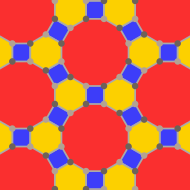
|

|
| Platonic, Archimedean and Catalan tilings with direction colors | |||||
Polygons[edit]

|

|

|

|

|

|

|
| Annotated regular polygons-set | ||||||
Star polygons[edit]
Fano plane[edit]
If they were miscategorized directly in Fano plane, the plain images in both sets could be mistaken for duplicates of the solitary image.
 |
When there is only one image set for a subject, it can (for the moment) be more practical to put it directly in the subject category. The downside is that someone who uploads a new image set may mix it with the old one.
Two sets containing the same tesseract shadow[edit]
Hyperbolic tilings[edit]
Misc.[edit]
Sets of photos[edit]
Bassae Frieze[edit]
Bassae Frieze; photo series by Carole Raddato, Bassae Frieze; photo series by Sarah C. Murray
%2C_Lapiths_fight_Centaurs%2C_about_420-400_BC%2C_British_Museum_(14073575548).jpg/227px-thumbnail.jpg)
|
%2C_Lapiths_fight_Centaurs%2C_about_420-400_BC%2C_British_Museum_(14237099726).jpg/225px-thumbnail.jpg)
|
%2C_Lapiths_fight_Centaurs%2C_about_420-400_BC%2C_British_Museum_(14073626197).jpg/227px-thumbnail.jpg)
|
%2C_Greeks_fight_Amazons%2C_about_420-400_BC%2C_British_Museum_(14256921551).jpg/219px-thumbnail.jpg)
|
%2C_Greeks_fight_Amazons%2C_about_420-400_BC%2C_British_Museum_(14073618960).jpg/229px-thumbnail.jpg)
|
%2C_Greeks_fight_Amazons%2C_about_420-400_BC%2C_British_Museum_(14258035892).jpg/219px-thumbnail.jpg)
|

|

|

|

|

|

|
Valued image set: Eiffel Tower under construction[edit]

|

|

|

|

|

|

|

|

|

|

|
Valued image set: The mascarons of the ten french scientists on the façade of the Grande Galerie de l'Evolution in Paris[edit]

|

|

|

|

|
User:Llez/Shells by H. Zell[edit]

|

|

|

|

|
Cheese on slate (photo series by Coyau)[edit]

|

|

|

|

|

|













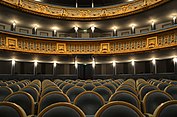












































































































































































































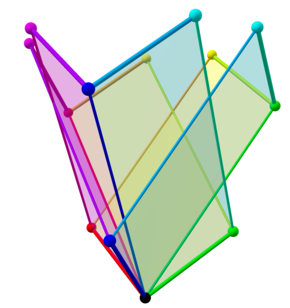























.svg/110px-Armoiries_empereur_Charles_IV_(DL).svg.png)
.svg/110px-Armoiries_empereur_Frédéric_III_(DL).svg.png)
.svg/110px-Armoiries_empereur_Rodolphe_II_(DL).svg.png)
























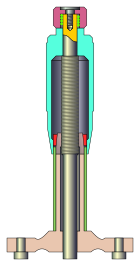




































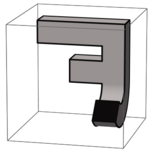












.png/91px-Bilinski_dodecahedron_(gray).png)
.png/91px-Golden_rhombohedra_in_Bilinski_dodecahedron%2C_0_(acute).png)
.png/91px-Golden_rhombohedra_in_Bilinski_dodecahedron%2C_1_(obtuse).png)


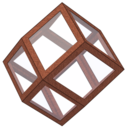








































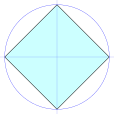


































.svg/120px-Regular_star_figure_3(3%2C1).svg.png)
.svg/120px-Regular_star_figure_4(7%2C2).svg.png)
.svg/120px-Regular_star_figure_4(5%2C2).svg.png)
.svg/120px-Regular_star_figure_3(9%2C4).svg.png)
.svg/120px-Regular_star_figure_2(8%2C3).svg.png)


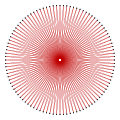

















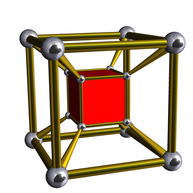




















.svg/220px-Chor_(Architektur).svg.png)













.png/95px-F4z(x2-y2).png)






























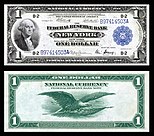


_-_stained_glass%2C_7_branch_Menorah.jpg/114px-Immaculate_Conception_Catholic_Church_(Knoxville%2C_Tennessee)_-_stained_glass%2C_7_branch_Menorah.jpg)
_-_stained_glass%2C_Agnus_Dei_on_the_Cross.jpg/114px-Immaculate_Conception_Catholic_Church_(Knoxville%2C_Tennessee)_-_stained_glass%2C_Agnus_Dei_on_the_Cross.jpg)
_-_stained_glass%2C_Agnus_Dei.jpg/114px-Immaculate_Conception_Catholic_Church_(Knoxville%2C_Tennessee)_-_stained_glass%2C_Agnus_Dei.jpg)
_-_stained_glass%2C_Eucharistic_Host_and_Chalice.jpg/114px-Immaculate_Conception_Catholic_Church_(Knoxville%2C_Tennessee)_-_stained_glass%2C_Eucharistic_Host_and_Chalice.jpg)







.jpg/154px-Wilkinson_(5719702597).jpg)
.jpg/154px-Lane_Bros_Mansfield_(6166761969).jpg)


.jpg/154px-Lion_Brickworks_(6166754073).jpg)
.jpg/154px-Eastwoods_(5442675188).jpg)
.jpg/154px-G.Robinson_(6175798457).jpg)
.jpg/154px-Greenwood_(5891214327).jpg)